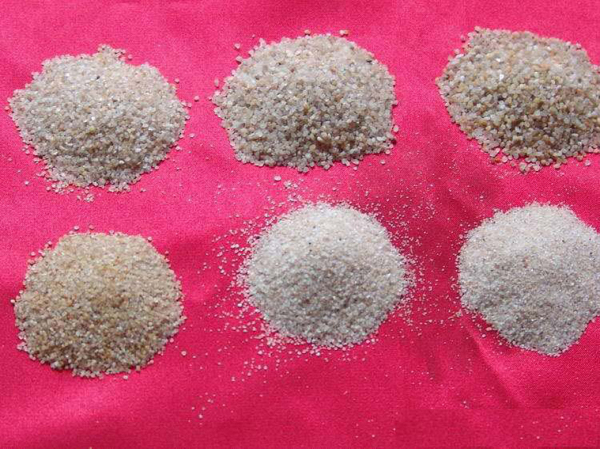The quartz sand beneficiation process is mainly to remove impurities and purify, remove a small amount or a small amount of impurities in the quartz sand, and obtain a highly difficult separation technology of refined quartz sand or high-purity quartz sand. The quartz sand beneficiation process mainly includes quartz sand impurity analysis and impurity removal process, quartz sand purification process, etc.

The impurity analysis process of quartz sand and quartz sandstone refers to the process of crushing, grinding and grading to grind the natural quartz sandstone ore and make the impurities and minerals reach the monomer dissociation state, and then obtain the raw quartz sand meeting the particle size requirements through the grading operation to prepare for the subsequent quartz sand impurity removal operation.
The jaw crusher is used to break the natural quartz sandstone ore into small pieces, and then the grinding equipment is used for wet grinding to grind the small quartz ore into finer quartz sand. The wet grinding process adopted can not only eliminate the dust generated in the grinding process, but also make the quartz particles rub against each other, and promote the impurities attached to the quartz surface (such as iron oxide and hydroxide) to dissociate from the quartz particles. Subsequently, the grinding products enter the grading operation, and the quartz sand meeting the particle size requirements can be used as the raw material quartz sand for the next stage of quartz sand impurity removal, and the coarse particles are returned to the grinding equipment for regrinding.
Magnetic separation is one of the effective methods to remove iron impurities in raw materials. The adoption of magnetic separation technology can largely remove hematite, limonite, biotite and other weakly magnetic impurity minerals, including connective particles.
Due to the weak magnetism of hematite, limonite, biotite and other minerals contained in the raw material, the magnetic field strength of 8 × It can be selected when it is more than 105A/m (ampere/meter); For the strong magnetic minerals containing mainly magnetite, the weak magnetic separator or medium magnetic separator is used for separation.
For aluminum existing in clay minerals, it is only necessary to scrub quartz sand to achieve good removal effect. Quartz sand scrubber is recommended for scrubbing.
It exists in quartz crystal in the form of inclusions, which is difficult to remove by general treatment methods. High temperature roasting and hydrofluoric acid pickling can be used.
The aluminum in feldspar and mica should be removed together with feldspar and mica by flotation.
In quartz ore, mica composed of layered structure is exposed to a large number of anions on the surface after grinding and dissociation. Cationic collectors can be used to collect mica minerals in a wide pH range. Although the collection properties of mica minerals are similar to feldspar minerals, the flotation pH range of mica minerals is wide, so mica minerals can be flotation under strong acidic conditions.
The reagent system for flotation separation of mica minerals is relatively simple. Generally, the pulp concentration can be adjusted to 30%~35%, dilute sulfuric acid is used for slurry mixing, and amine cationic collectors are used to complete the separation of mica, feldspar and quartz.
The separation methods of feldspar and quartz mainly include fluorine flotation and fluorine-free flotation. Fluorine flotation method refers to the preferential flotation of feldspar with cationic collectors under the condition of strong acidity and activation of fluoride ions. The key is to adjust the pH value of pulp solution. The fluorine-free flotation principle is that under strong acid conditions, the anionic collector dodecyl sulfonate and diamine cationic collector are mixed, and the anionic collector is then complexed with the diamine collector adsorbed on the surface of feldspar to form a co-adsorption and improve the surface hydrophobicity of feldspar.
Phosphorus in quartz ore generally exists in the form of apatite, which can be recovered by fatty acid soap anionic collectors, such as sodium oleate, oxidized paraffin soap, tar oil, etc. Due to the high requirements of fatty acid collectors on water quality, temperature and other environment, the hydrophobic surface can be enhanced by adding heavy oil, kerosene and other mineral oils to achieve better collection effect. In addition, modified flotation reagents can also be used, which has a good effect on the separation of phosphorus minerals.